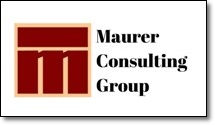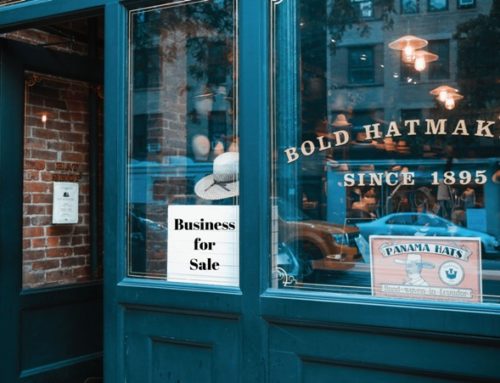
The world as we know it is coming to an end! Sounds an awful lot like the childhood story, Chicken Little, doesn’t it? Remember that story about Henny-Penny running around the barn yard telling everyone the sky is falling after some innocent thing fell on her head? Definitely not a good strategy for dealing with change. Unlike every other day, something new and different happened – something changed. Strategies for change should be top of mind for every small business owner who is passionate about the success of their firm.
Notice the key words in that first sentence are “…as we know it…” The statement can sound scary, some may react with fear and frustration, but in reality, “…as we know it…” really only means that things are going to change. Again. Small business owners who are strategically focused will find this to be just another ‘ho-hum’ moment. They are already attuned to strategic thinking and staying ahead of potential disruptions to their routine business direction.
I am sounding the alert for change today is because of an article I read about changes coming at the Hershey chocolate company. To me, and other chocolate lovers, this could be catastrophic. Hershey announced that half of their standard and king-sized confections will be less than 200 calories by 2022. That’s just five short years! I need to figure out how to safely store ‘real’ chocolate in massive quantities before this goes into effect. Any and all ideas for high level ‘Save the Chocolate’ strategies will be welcome. You can post them in the Comments section below.
Of course, with mainstream focus changing to healthier eating and living, this was bound to happen. I have come to the realization that unless something tastes like cardboard, it’s not good for me and I can’t eat it anymore. (Sigh!) To stay healthy, changes in what we eat will be necessary. But, chocolate should be off limits when it comes to this level of extreme change to my way of thinking. If it’s half of Hershey’s product line this time, how long until chocolate will no longer be available at all?! What will replace this heavenly delicacy in our lives? I think now this is already beginning to happen as you can see in the video below.
In Nestle’s case, they are developing strategies for change that deal with a global change toward healthier life styles. And, I’m sure there will be discussion about how this will help them increase profits too. We all love to eat limitless amounts of chocolate, other sweets and snacks. But, we now realize that is not the wisest approach to healthy living. We’re not anxious to give up our little bad and somewhat unhealthy habits entirely. That said, if we can eat a little bit less of our favorite coveted treats, with lower calorie counts, less sugar and fat, we don’t feel so deprived.
Use Strategies for Change to Control Internal and External Trends
Knowing that change will always happen is something entrepreneurs need to understand and accept. Change requires us to become ever-alert to outside trends and changes. It is imperative how external change can affect our businesses. Changes come in all shapes and sizes. Change can come in the form of increased prices for products we sell or materials we need to produce our products or services. We have experienced changes in fuel costs in recent years. The price of fuel for our cars and trucks increased. Those changes are painful enough in a tight economy. But, the cost of moving products and materials around the country to our shops and studios, and to deliver to our customers, trickled down to many elements of our small businesses.
Using Strategies for Change to Remain Competitive
 Increases in costs for fuel can affect our bottom line when it comes to distribution and delivery costs. Even some material costs are affected if petroleum is an important ingredient. Southwest Airlines saw the increase in fuel costs coming. Southwest and their strategic approach allowed them to secure access to enough ‘cheap’ fuel to nearly get them through the petroleum cost crisis during the 2008 recession. If you are interested in more of the strategies Southwest used to control fuel costs and profit levels, you may want to read this case study.
Increases in costs for fuel can affect our bottom line when it comes to distribution and delivery costs. Even some material costs are affected if petroleum is an important ingredient. Southwest Airlines saw the increase in fuel costs coming. Southwest and their strategic approach allowed them to secure access to enough ‘cheap’ fuel to nearly get them through the petroleum cost crisis during the 2008 recession. If you are interested in more of the strategies Southwest used to control fuel costs and profit levels, you may want to read this case study.
Customer buying habits can change, as can demand for our products or services once something new and better comes along. (Not that I can see any thing positive in changing chocolate products.) Following 9/11 here in the US, buying nearly came to a complete screeching halt. While shock was probably the most impressive change following the terrorist attacks in New York City and Washington, DC, there were many more changes in consumer buying habits as the line of dominoes began to fall.
The Internet has made major changes in the way customers buy. Add in the stagnant economic state that lingers after the recession that hit in 2008-09 and many are in a somewhat long term sales slump. Wise owners and leadership in small businesses are ever alert to changes on the horizon. We have a higher level of control over internal changes to our companies. Internal decisions for trend changes can generally deal with changing strategies and redirection.
External changes are usually totally out of our control. They can arrive on the scene with little or no advanced notice. Strategic thinkers and managers watch for new trends, analyze how they might affect their company – positively or negatively. Develop new, or revised strategies to leverage our strengths and capabilities to achieve positive results.
What system have you put in place to make note of and track external changes that can affect your business? Please share your tactics in the Comment section below.
Visualize — Analyze — Strategize






